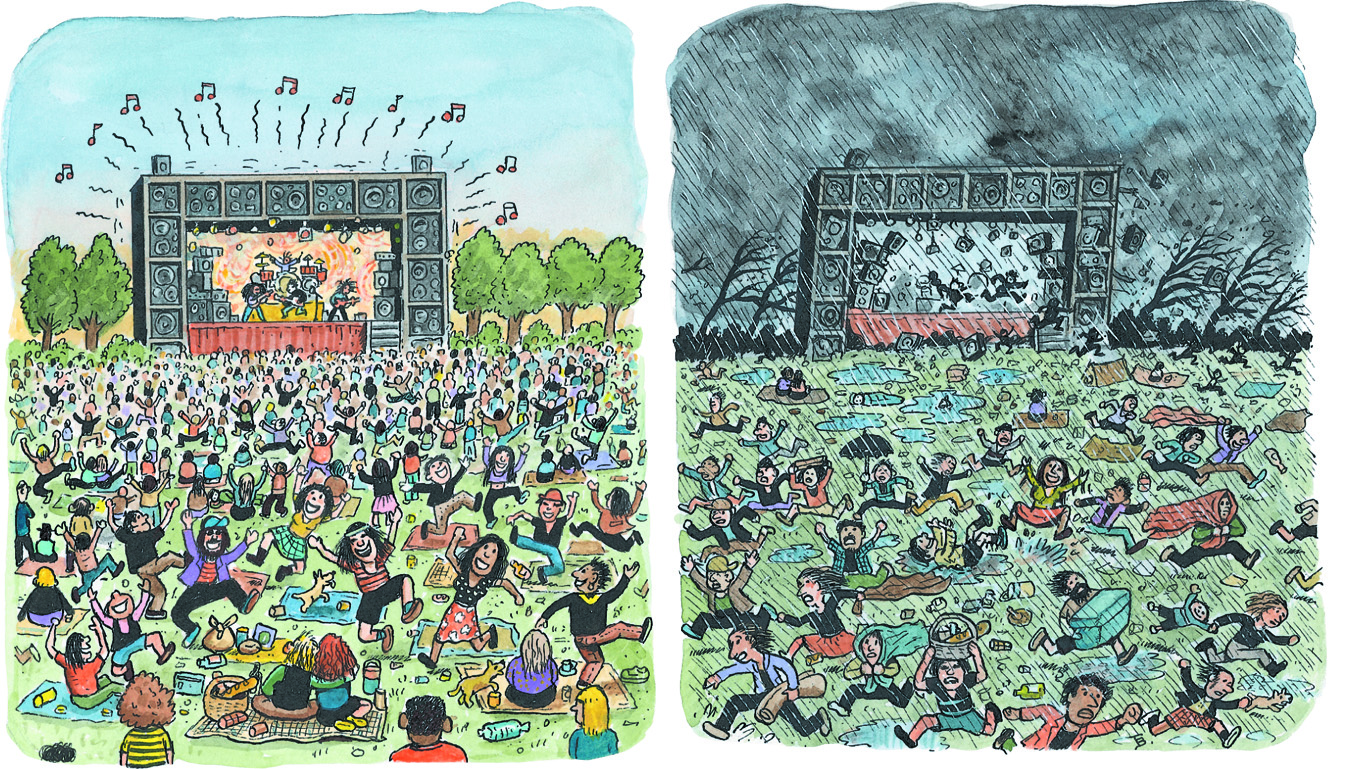
Overview
In this section you will find materials that support the implementation of EarthComm, Section 3: Thunderstorms and Flash Floods.
Learning Outcomes
- Analyze data to explain the relationship between the frequency of thunderstorms and topography.
- Analyze data on a topographic map to determine areas of a drainage basin at risk for flooding.
- Analyze data on a local topographic map to explain the vulnerability of your community to flooding.
Inquiring Further
- To learn more about severe weather events in your community, visit the following web sites:
National Weather Service Warnings and Forecasts, NOAA
Click on your state to see if there are any current watches, warnings, or advisories for your community.
Severe Thunderstorm Events, NOAA
Click on the “Index of Events” tab to view a list of severe thunderstorm events that have occurred in the U.S. since 1950.
Weather Hazard Statistics, NOAA
Select national or state data for data showing the impacts of different weather hazards.
Resources
To learn more about this topic, visit the following web sites:
Development of a Thunderstorm
Information about Thunderstorms, NOAA
Thunderstorm basics and facts about the thunderstorm life cycle.
How Thunderstorms Form, UCAR
Explains the conditions necessary for thunderstorm development, the stages of a thunderstorm, and types of thunderstorm
Thunderstorms and Lightning...the Underrated Killers!, NOAA
Reviews the hazards associated with thunderstorms, including winds, rain, hail, and lightning. Also reviews the development of thunderstorms, where thunderstorms are likely to occur, and how to remain safe during a thunderstorm.
Thunderstorms, UCAR
Damaging wind from thunderstorms is much more common than damage from tornadoes. Learn about wind related processes.
Floods
Floods, FEMA
Introduction to floods and flash floods. Includes suggestions for preparing for a flood and facts on the devastation caused by floods.
Flash Floods and Floods...the Awesome Power!, NOAA
Explains how flash floods occur, presents information on devastating flash floods in the US, defines the different types of floods, and reviews steps for protecting oneself from flood damages.
River Conditions, NOAA
Current listing of floods in the United States.
Vizualising Past Floods Events and their Costs, FEMA
An interactive data tool to allow you to better understand your historical flood risk and potential flood-related costs.
Flooding, USGS
Iinformation about active and recent events tracked by the USGS National Floods Specialist.
Flood Hazards and Terms, Univ. Wisconsin
Distinguish between primary and secondary hazards associated with flooding.
Thunderstorm and Camping Safety, Cooperative Institute for Mesoscale Meteorology
Includes tips on protecting oneself from flash floods associated with thunderstorms while in the outdoors hiking or camping.
Lightning and Thunder
A Lightning Primer, Global Hydrology and Climate Center, NASA
Reviews characteristics of lightning and looks at the history of lightning research.
Thunderstorms and Lightning...the Underrated Killers!, NOAA
Reviews the hazards associated with thunderstorms, including winds, rain, hail, and lightning. Also reviews the development of thunderstorms, where thunderstorms are likely to occur, and how to remain safe during a thunderstorm.
Weather Safety: Lightning, NOAA
Explains the dangers associated with lightning and ways to avoid thunderstorm threats.
Preparedness Fast Facts - Thunderstorms, Red Cross
Reviews the hazards associated with thunderstorms, including winds, rain, hail, and lightning and how to remain safe during a thunderstorm.
Lightning Safety Tips
Thunderstorm and Camping Safety, Cooperative Institute for Mesoscale Meteorology
Includes tips on protecting oneself from lightnig associated with thunderstorms while in the outdoors hiking or camping.
National Lightning Safety Institute, NLSI
Provides personal as well as structural lightning safety tips.
